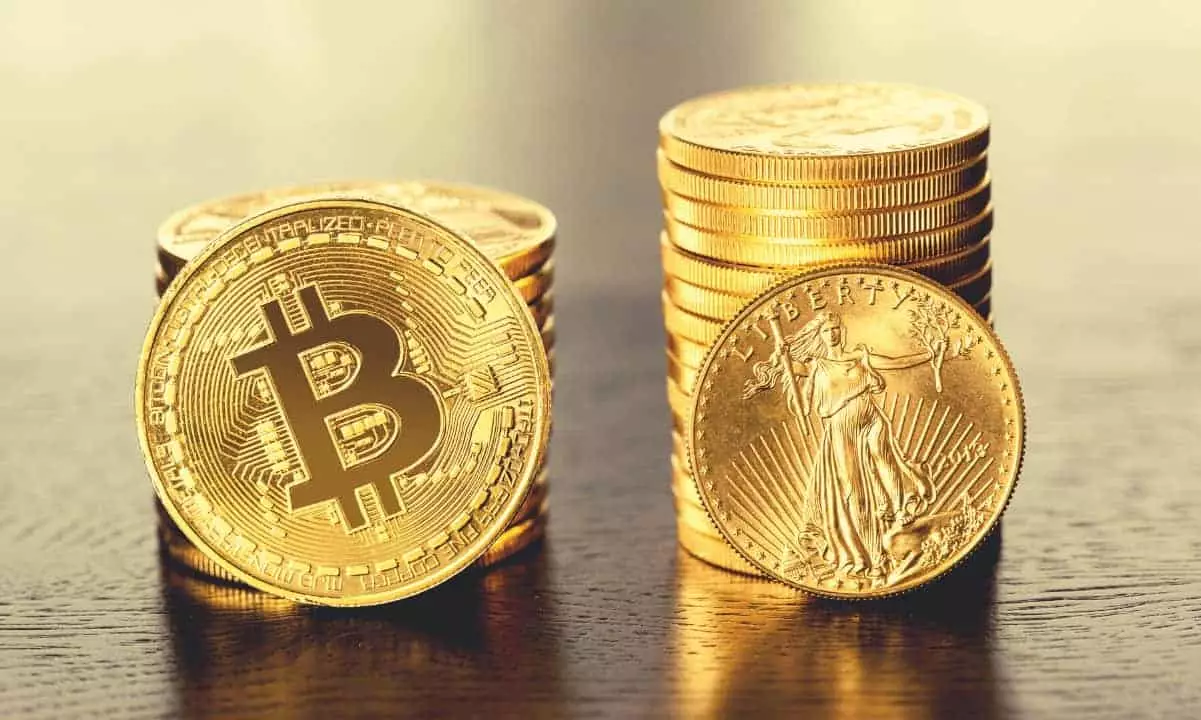In an unprecedented leap, gold has crossed the $3,000 threshold—a milestone that many analysts are viewing as a potential pivot point in global economic sentiment. The surge can’t merely be chalked up to speculative trading; it reflects a confluence of factors suggesting that investors are increasingly wary of the future. As geopolitical tensions mount around the world, the precious metal stands out as a beacon of stability amidst a storm of uncertainty. The fear that comes from unwinding trade deals, military conflicts, and diplomatic fallout drives investors toward gold as a hedge, reinforcing its status as a reliable store of value.
The Inflationary Tug of War
Inflation has become an omnipresent concern. Figures are creeping up to levels not seen in decades, and this inflationary spike effectively undermines the purchasing power of fiat currencies. With U.S. government spending at astronomical rates—hovering around $7 trillion annually—public confidence in paper assets is eroding rapidly. In this context of economic turmoil, gold garners renewed appeal, acting almost like a financial lifebuoy. Analysts warn that continued inflation could lead to a fragile economic landscape where gold offers a buffer against devaluing fiat currencies.
Institutional Demand on the Rise
One of the most compelling aspects of gold’s current ascendance is the extraordinary demand from central banks. Over the past three years, more than 1,000 tonnes of gold have been stockpiled annually by these institutions. This ravenous buying spree is not merely reactionary; it reflects a strategic shift toward gold in the composition of national reserves. As central banks hoard physical metals, they create a scarcity that naturally pumps up prices. When essential supply dwindles, prices inevitably rise, signaling an urgent need for alternative asset strategies among investors.
Shifts in Market Correlations
An intriguing phenomenon in the current market is gold’s newfound resilience against a strong U.S. dollar. The traditional narrative holds that a robust dollar typically results in lower gold prices. However, gold’s recent performance has defied this script, prompting notable voices—like that of financial commentator Peter Schiff—to suggest a decoupling from historical trends. Is this indicative of a new paradigm where gold’s value transcends the limitations of fiat currencies? This question is increasingly pertinent for investors seeking refuge in assets that promise stability rather than volatility.
Cryptocurrency Showdown: Gold vs. Bitcoin
The dynamics between gold and cryptocurrencies, particularly Bitcoin, form another layer in this multifaceted narrative. Once the touted “digital gold,” Bitcoin has floundered in recent months, often resembling a volatile tech stock rather than a stable alternative. Schiff’s analogy of gold as the “apex predator” that will consume Bitcoin sheds light on an asset that has stood the test of time versus one that is still grappling with market identity. The ratio of Bitcoin to gold has plummeted, further raising questions about the ongoing viability of Bitcoin as a safe-haven asset. This divergence is crucial for anyone considering a diversified investment strategy.
Fear of Recession Looms Large
Investor sentiment is also increasingly conditioned by fears of recession. With the U.S. economy showcasing signs of strain, the potential for a contraction adds a layer of urgency to gold’s appeal. When calamity threatens to disrupt the markets, gold often serves as a refuge—proving its relevance time and again as a hedge against gloomy economic forecasts. Against a backdrop of unprecedented government spending and inflated asset bubbles, the safer choice for many is clear.
The Psychological Aspect of Investing
Ultimately, the surge in gold prices ties into the psychological dimensions intrinsic to investing. As narratives of impending collapse circulate, fear often drives market behavior; in such times, moments of clarity emerge as critical. Gold’s enduring appeal lies not just in its material worth but also in its historical role as an anchor in the storm. Investors increasingly turn to gold as a form of psychological reassurance in volatile climates, solidifying its status as more than just a commodity but a symbol of enduring stability.
The interplay of these factors ensures that the spotlight on gold will endure, with increasing speculation on how high this cherished metal can soar in times of doubt.

